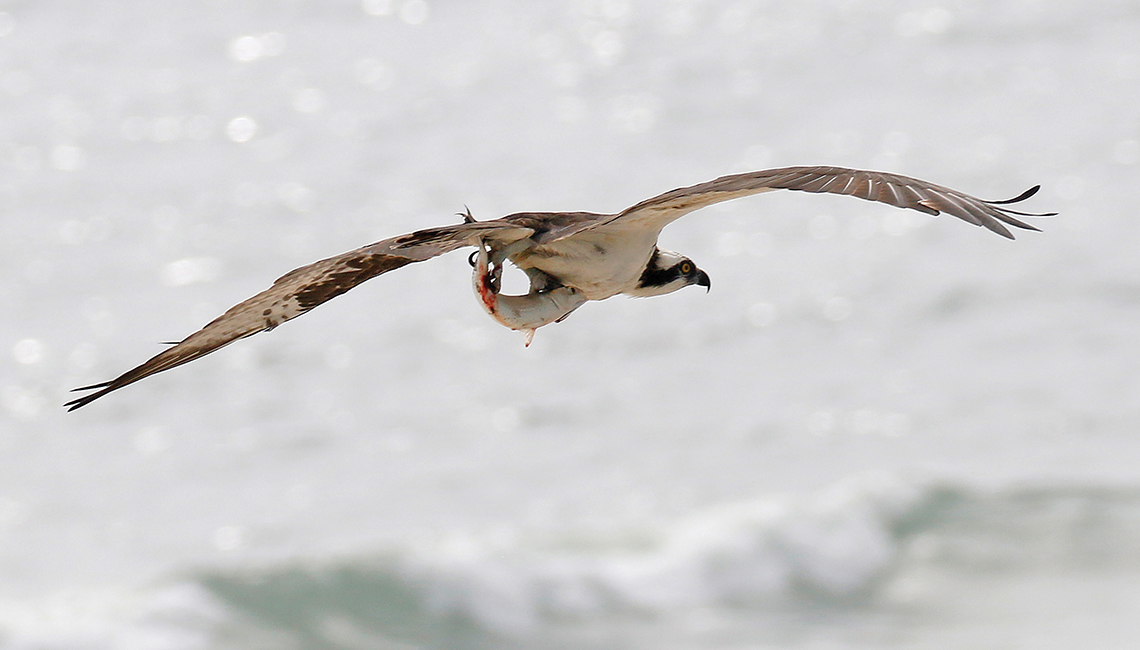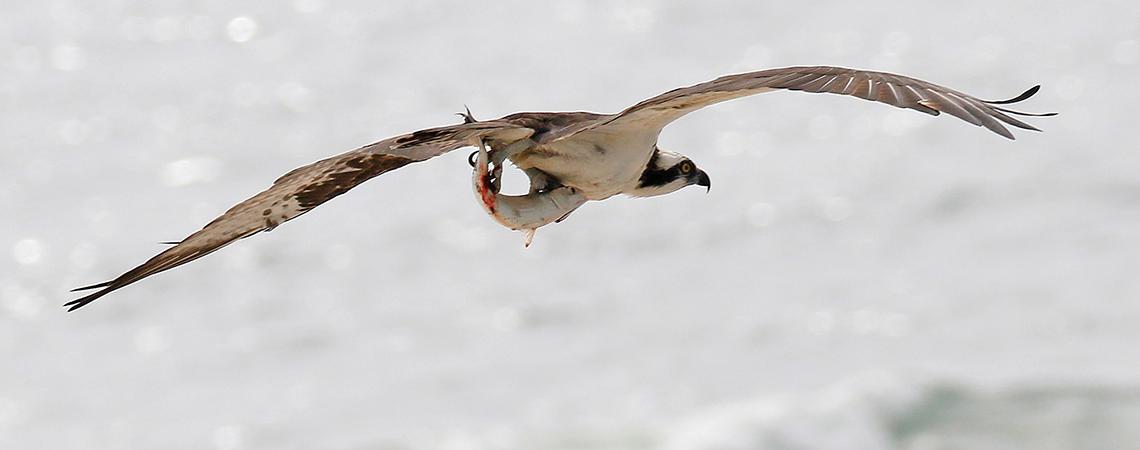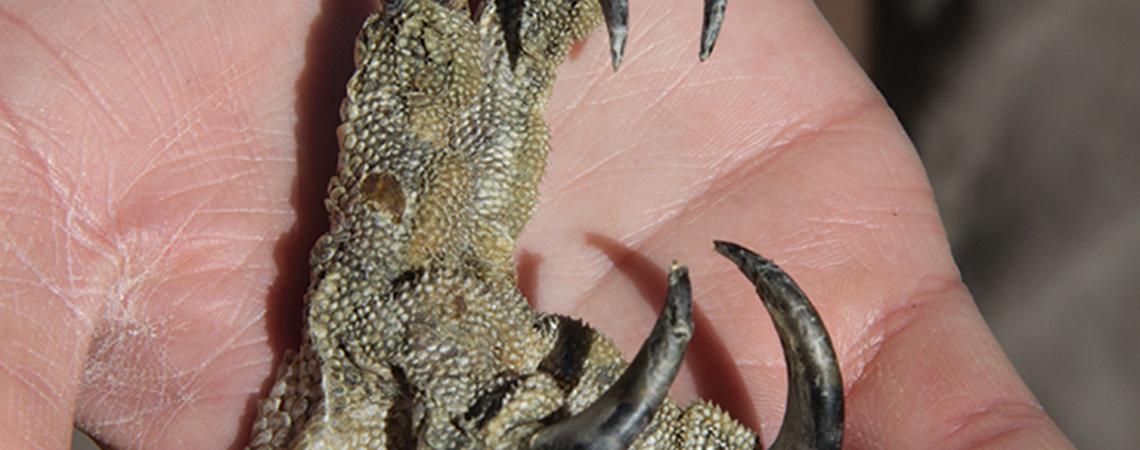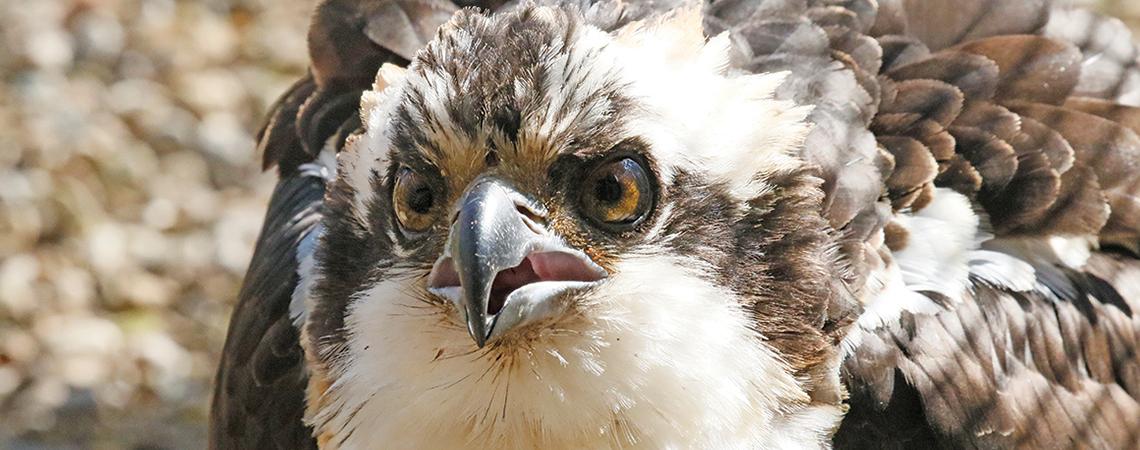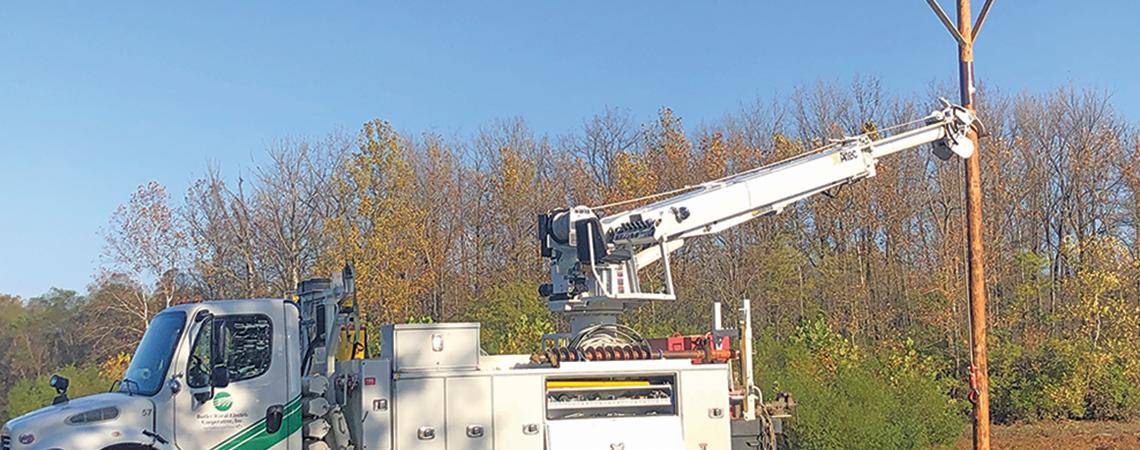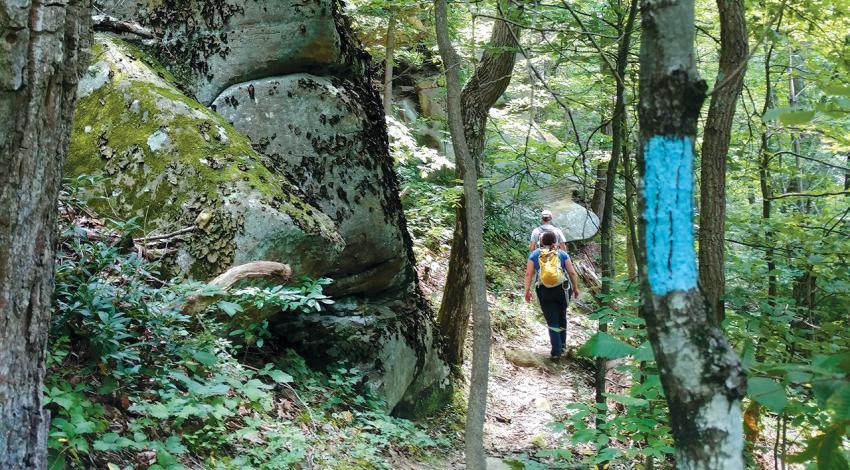The first time you see an osprey dive on a fish is one of those memorable birding moments that last a lifetime. With a wingspan of up to 6 feet, ospreys are not small birds of prey. In addition, their distinctive dark-brown and white markings make them readily identifiable as they hover — sometimes 100 feet high — above a lake, river, or other large body of water.
Upon spotting a fish swimming near the surface, an osprey folds its wings, drops from the sky, and hits the water feet first, with sharp, unusually long talons extended, creating an impressive splash. The bird may even completely submerge. They’re not always successful at this “plunge-diving” fishing technique, as wildlife biologists term it, but when they are, the bird lumbers from the water manipulating its catch to carry it head-first, making its prize more aerodynamic in flight.
Osprey in flight
As it flies, the osprey will also shake itself, much like a dog, removing water from its feathers. The fish feast is then flown to a large, bulky stick nest and shared with its mate/young, or possibly, the fish is simply taken to a stout tree limb where the osprey alights and enjoys a solo meal of the world’s freshest sushi.
Like bald eagles, ospreys nearly disappeared from North America when their populations were severely reduced by the unregulated use of agricultural pesticides during the 1950s and 1960s. “Those chemicals contaminated fish and negatively affected reproduction of avian predators at the top of the food chain,” says Jim McCormac, author of the identification guide Birds of Ohio. “By the early 1970s, only a handful of ospreys were seen in Ohio each year.”
The good news is that those dark days have passed for Buckeye State ospreys, and the species has recovered. “Ohio’s osprey reintroduction program, begun in 1996, has been a huge success,” says Laura Kearns, research biologist for the Ohio Division of Wildlife. “The program set a goal of having 20 nesting pairs of ospreys in the state by 2010 and that goal was achieved by 2003, seven years ahead of schedule. Today, the osprey population in Ohio continues to do well.”
Ospreys are so unique to the bird world that they are the only member in the scientific family Pandionidae. One of the characteristics of the bird that makes it unusual is a large front outer toe on each foot that can rotate backward to help carry a fish. In other words, when the specialized toe is rotated, two talons grasp a fish from behind, balancing the two talons grasping it from the front. Also helping ospreys “get a grip” on slippery fish are scaly, roughened spines on the soles of their feet, known as tubercles.
Courtship displays in ospreys are unusual affairs, with the male performing a “fish flight” sky dance for the female. Screaming and holding a fish in its talons, the male alternates hovering with making steep ascents and dives. As a fisherman myself, I have tried that type of nuptial display in front of my wife, but to no avail.
Places to See Ohio Ospreys
Migratory ospreys will be returning to the Buckeye State this month, and may be seen at nearly any large body of water. The Ohio Division of Wildlife recommends the following viewing areas:
- Alum Creek Lake along Hogback Road (Delaware County)
- Lake LaSuAn Wildlife Area (Williams County)
- Deer Creek Lake at the Deer Creek Wildlife Area (Pickaway County)
- Salt Fork Wildlife Area (Guernsey County)
- Portage Lakes (North Reservoir, Long Lake, and Nimisila Reservoir in Summit County)
- Acton Lake at Hueston Woods State Park (Butler County)
